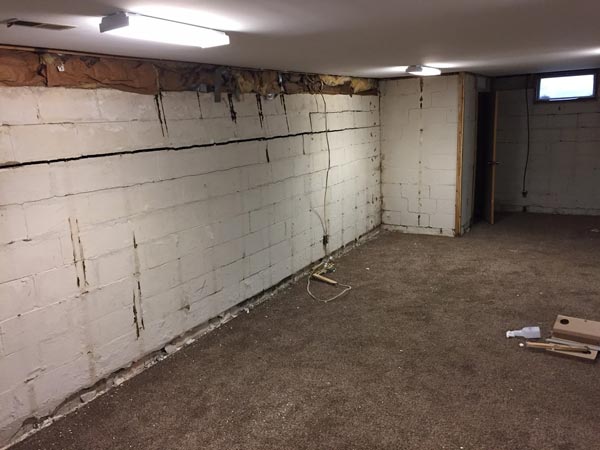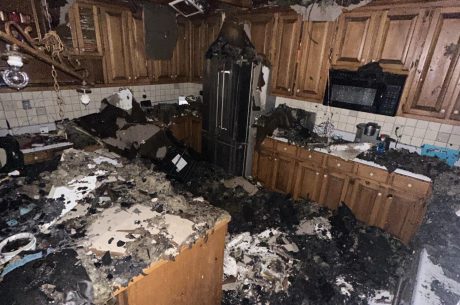Lawrenceville sits atop clay-rich soil, which expands and contracts significantly with moisture changes. Combined with heavy rainfall and high humidity, this creates ideal conditions for foundation settlement, concrete cracking, and driveway joint failure, making crack sealing essential. These openings become entry points for groundwater, leading to seepage, mold, and structural issues.
When water infiltrates through cracks or unsealed joints, the damage doesn’t stop at surface staining—it breeds mold, degrades insulation, erodes structural concrete, and jeopardizes long-term property integrity.

Table of Contents
Effective Methods for Crack Sealing and Joints
1. Hydraulic Cement: Fast & Waterproof Crack Sealing
Hydraulic cement reacts with water to set quickly—typically within minutes—making it ideal for sealing active water leaks or damp foundation cracks. It expands as it cures, blocking leaks in masonry or slab surfaces. ([turn0search5]turn0news19)
Typical use cases:
- Floor or wall cracks seeping moisture
- Leaky basement corner cracks or construction joints
- Small holes or fractures near plumbing penetrations
Pros:
- Sets rapidly in wet conditions
- Creates a strong, watertight barrier
- Durable under hydrostatic pressure
Cons:
- Not flexible; may crack again if structural movement occurs
- Typically used as a localized patch, not a full system fix.
Best used in combination with broader drainage or joint repair strategies.
2. Anti‑Hydro Mortar: Integral Resistant Crack Sealing
Anti‑Hydro AH‑1 is a performance admixture you add to concrete or mortar mix to dramatically improve impermeability. It increases hydration, reduces porosity, and enhances tensile strength. ([turn0search1])
Why it works:
- Crystalline sealing properties prevent water migration through concrete
- Reduces shrinkage and shrink-related cracking
- Long-term durability beyond surface patching
Ideal for repointing driveway joints, filling slab cracks, or smoothing foundation surfaces—especially before applying exterior waterproof coatings. It’s a proactive solution, embedding water resistance into the concrete itself.
Key Cracking & Joint Scenarios in Lawrenceville
Foundation Wall & Basement Floor Cracks
Basement wall and floor cracks are common in Lawrenceville due to hydrostatic pressure and clay soil movement. Even minor cracks can lead to dampness, efflorescence, or visible water stains. Companies like Atlanta Basement Systems and Groundworks offer foam injection or drainage-integrated crack repairs to fully seal subsurface water under pressure. ([turn0search3]turn0search7turn0search8)
Driveway Cracks & Slab Joints
Driveways and patios often crack due to root intrusion, soil heaving, or poor compaction. Slab joints between driveway segments open over time, allowing water to weaken sub-base materials and accelerate deterioration. AquaGuard Lawrenceville warns that left unattended, this cracking leads to unsafe surfaces and increased repair costs.
Steps for Proactive Crack & Joint Sealing
Step 1: Inspect and Clean
- Check foundation walls, slab corners, driveway joints, and expansion joints regularly.
- Clean out debris, loose concrete, and vegetation before applying any sealants.
Step 2: Apply Hydraulic Cement
- For active leaks or damp cracks, mix hydraulic cement according to instructions.
- Trowel it firmly into the crack and allow rapid curing.
- Reassess after 24 hours for further leakage or shifting.
Step 3: Use Anti‑Hydro Mortar
- When repairing or repointing cracks, mix standard mortar with Anti‑Hydro AH‑1.
- Ensure proper water-to-mix ratio for optimal curing and crystal formation.
- This approach enhances long-term resistance against moisture ingress.
Step 4: Seal Slab Joints
- Wide slab joints can be overfilled with Anti‑Hydro-enhanced mortar or joint filler.
- For driveways, apply a flexible joint sealer atop the mortar to allow expansion.
Step 5: Integrate with Preventive Systems
- Pair crack repair with French drains, sealed downspouts, and slope grading away from foundation.
- Install or maintain sump pumps to intercept subsurface water flow before it reaches repaired cracks.
The Lawrenceville Soil Factor: Why It’s Crucial to Seal Early
Clay soil in Lawrenceville absorbs massive amounts of moisture during heavy rain, then shrinks during heat—causing foundation movement. This cyclical motion often leads to cracks recurring without proper sealing and drainage.
By addressing cracks and joints early, especially before the wet season, you avoid:
- Water intrusion into basements or slab systems
- Mold, mildew, and indoor air concerns
- Higher structural repair or foundation stabilization costs later
Summary Table: Sealing Methods & Matching Applications
| Use Case | Recommended Method | Benefits |
|---|---|---|
| Active basement cracks | Hydraulic cement under pressure | Fast-sealing, immediate temporary solution |
| Joint sealing in slabs | Anti‑Hydro mixed mortar + flexible sealer | Long-term impermeability, flexible joints |
| Surface reconstruction | Anti‑Hydro-enhanced patch & finishing | Prevents recurring cracks, reduces porosity |
| Ground pressure areas | Combined with drainage and grading | Reduces hydrostatic forces causing cracks |
Why Work with Certified Experts in Lawrenceville
Companies like Puroclean of Lawrenceville have rich experience managing foundation and concrete repairs over Lawrenceville’s clay-rich terrain. Their teams are equipped to assess subsurface causes and properly install waterproof additives and crack sealing systems.
Expert installers adhere to:
- Proper surface preparation
- Correct mixing/application of hydraulic cement or Anti‑Hydro mortar
- Integration with drainage or sump systems where needed
- Ongoing inspection recommendations for long-term performance
Final Thoughts
Concrete cracks and joints left untreated invite water intrusion with serious consequences: mold, structural damage, health issues, and diminished property value.
By proactive crack sealing early with suitable products—hydraulic cement for fast patches and Anti‑Hydro-enriched mortar for long-term resistance—you stop water before it becomes a costly issue.
Remember to integrate repairs into broader drainage and moisture control plans—French drains, grading, and sump systems—to ensure sustainable dryness.
For Lawrenceville properties, early intervention is not optional—it’s sensible investment preservation. If water intrusion or cracks are already causing concern, a professional assessment and crack sealing repair using advanced methods can protect your investment today and for the long term.



 PuroClean of Lawrenceville
PuroClean of Lawrenceville